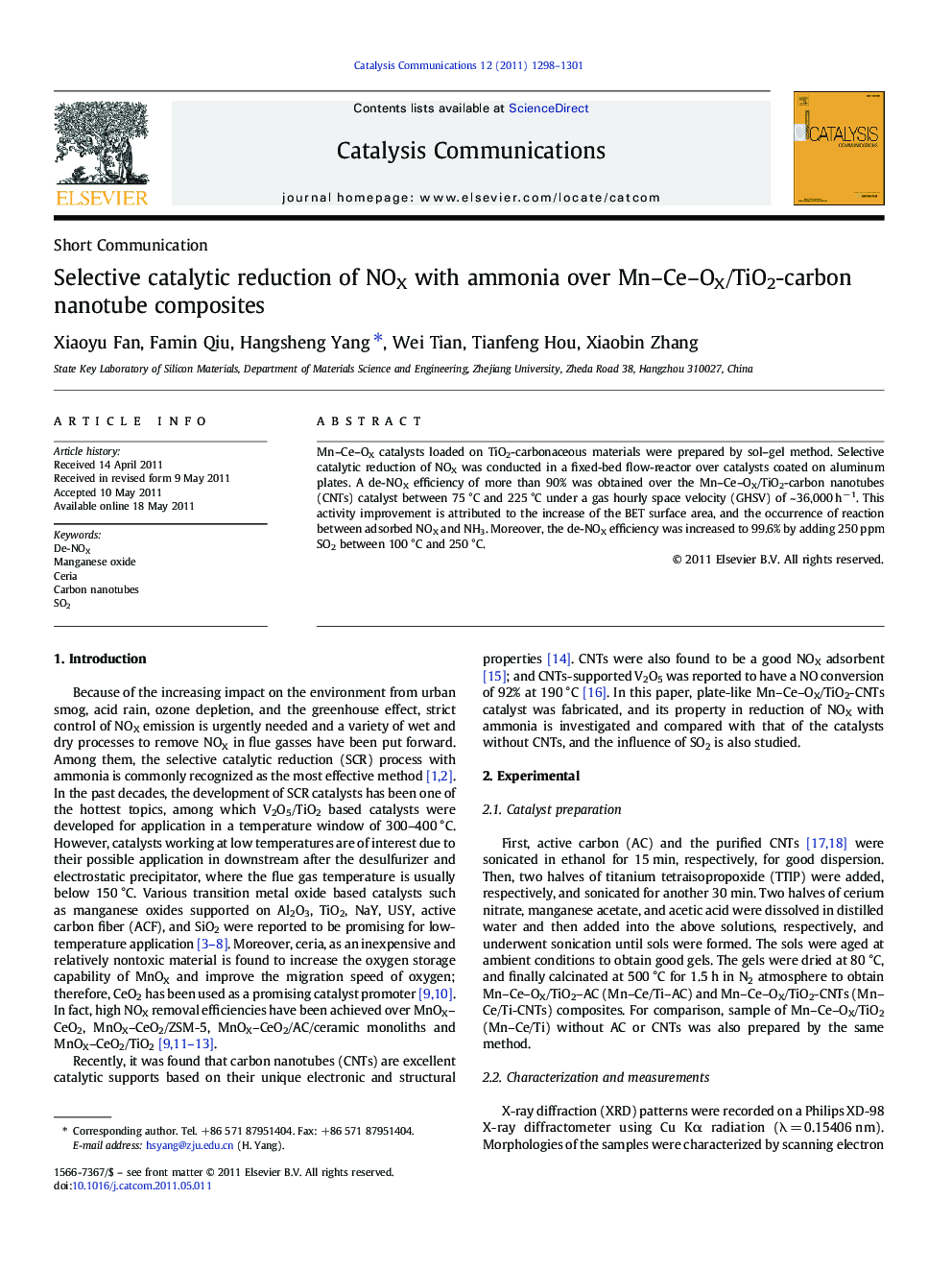| Article ID | Journal | Published Year | Pages | File Type |
|---|---|---|---|---|
| 51842 | Catalysis Communications | 2011 | 4 Pages |
Mn–Ce–OX catalysts loaded on TiO2-carbonaceous materials were prepared by sol–gel method. Selective catalytic reduction of NOX was conducted in a fixed-bed flow-reactor over catalysts coated on aluminum plates. A de-NOX efficiency of more than 90% was obtained over the Mn–Ce–OX/TiO2-carbon nanotubes (CNTs) catalyst between 75 °C and 225 °C under a gas hourly space velocity (GHSV) of ~ 36,000 h−1. This activity improvement is attributed to the increase of the BET surface area, and the occurrence of reaction between adsorbed NOX and NH3. Moreover, the de-NOX efficiency was increased to 99.6% by adding 250 ppm SO2 between 100 °C and 250 °C.
Graphical abstractSelective catalytic reduction of NOX with NH3 over Mn–Ce–OX catalysts loaded on TiO2-carbonaceous materials was conducted. The de-NOX efficiency was increased to 99.6% by adding 250 ppm SO2 between 100 °C and 250 °C. The given figure shows the NOX removal efficiency as a function of reaction temperatures over Mn–Ce/Ti-CNTs under different SO2 and/or NH3 concentrations. The data in bracket represent the concentrations (ppm) of NOX, NH3 and SO2, respectively.Figure optionsDownload full-size imageDownload as PowerPoint slideHighlights► Carbon nanotubes (CNTs) were introduced into the traditional Mn–Ce–OX/TiO2 catalyst for the reduction of NOX with ammonia. ► The activity promotion at low-temperatures in Mn–Ce–OX/TiO2-CNTs catalyst could be attributed to the increase of BET surface area, and the occurrence of reaction between adsorbed NOX and NH3. ► The improvement of de-NOX efficiency in Mn–Ce–OX/TiO2-CNTs catalyst by introducing a small amount of SO2 is also observed. ► The flow-reactor used for catalytic activity tests was close to the real selective catalytic reaction (SCR) systems.
